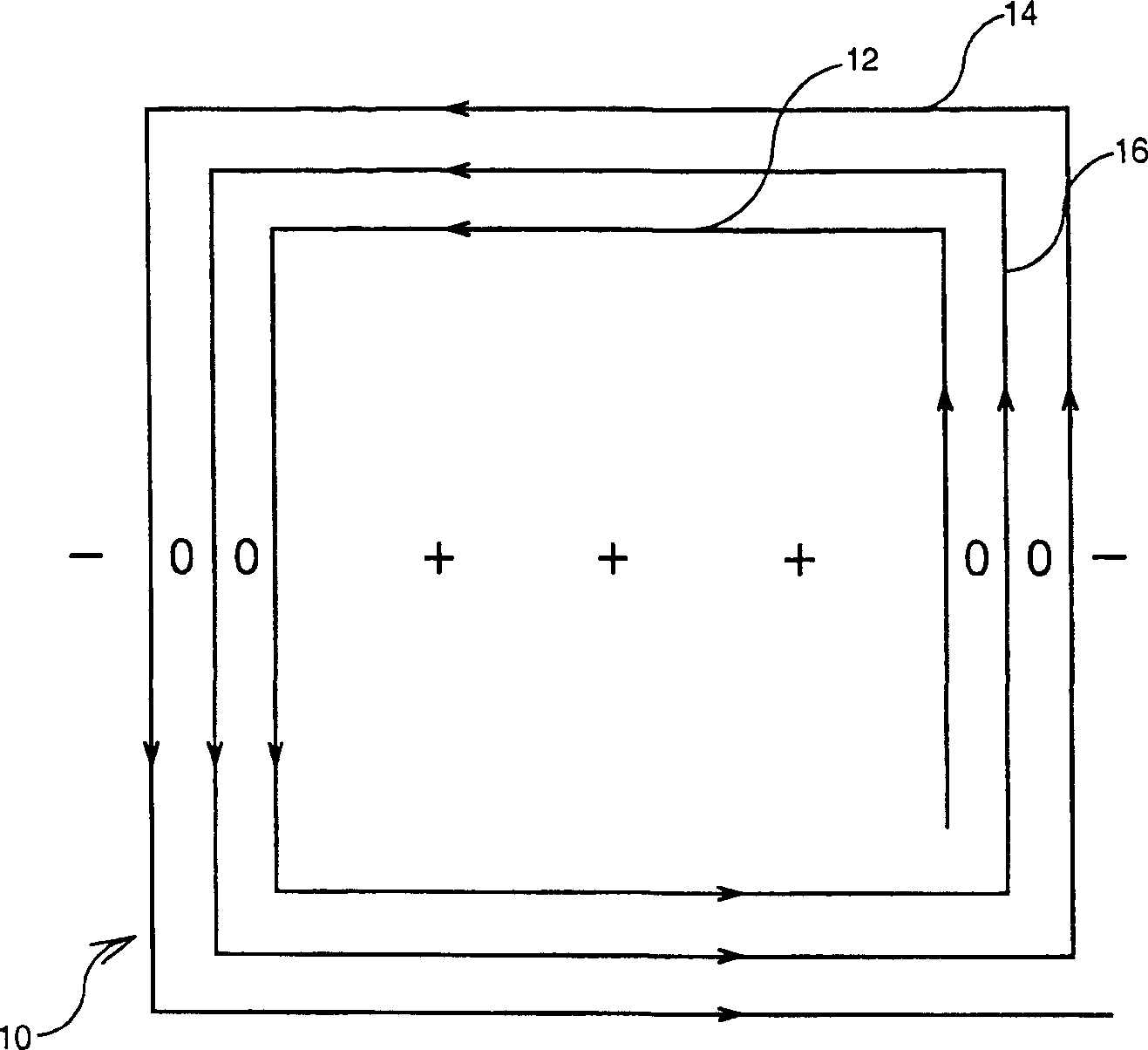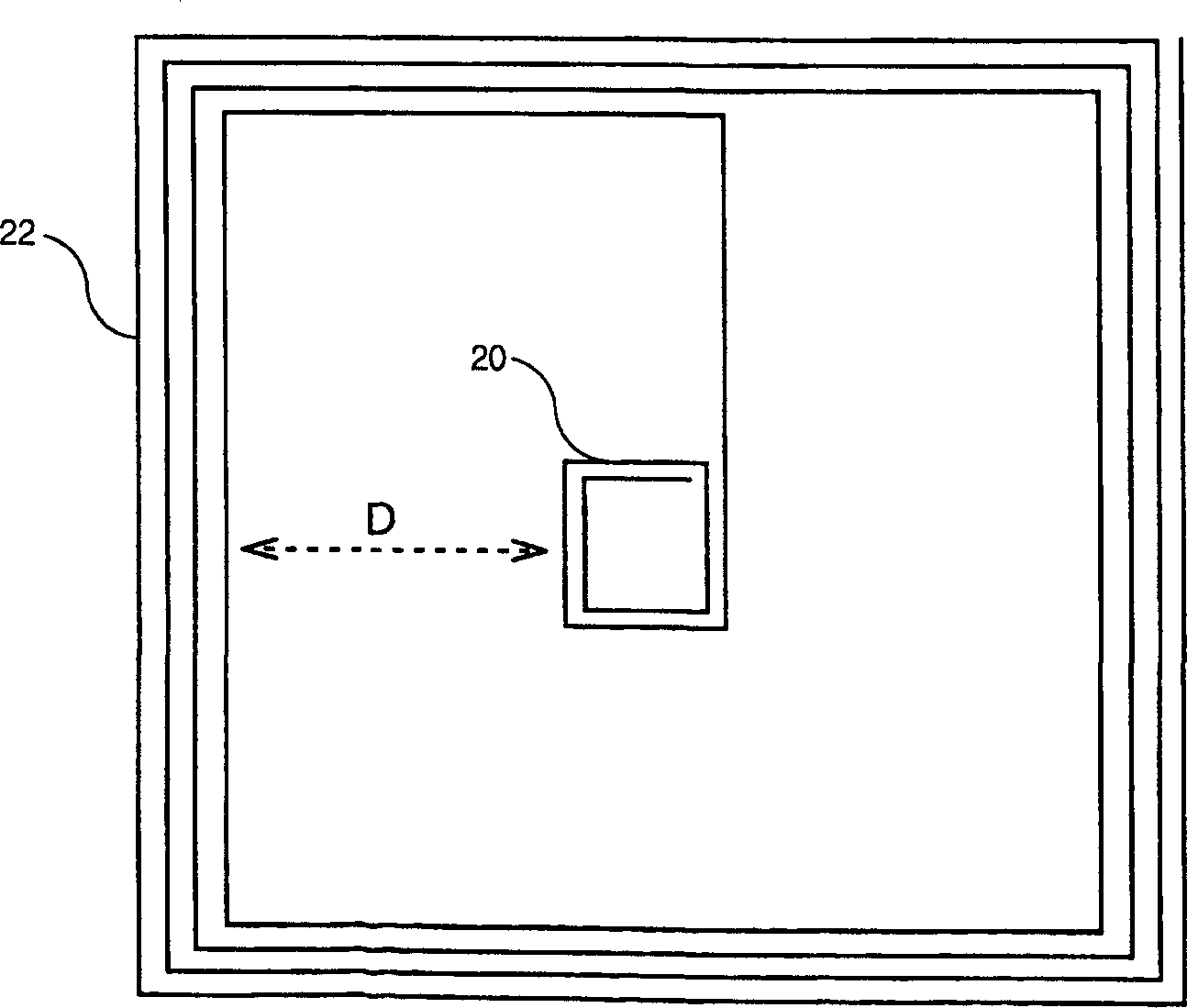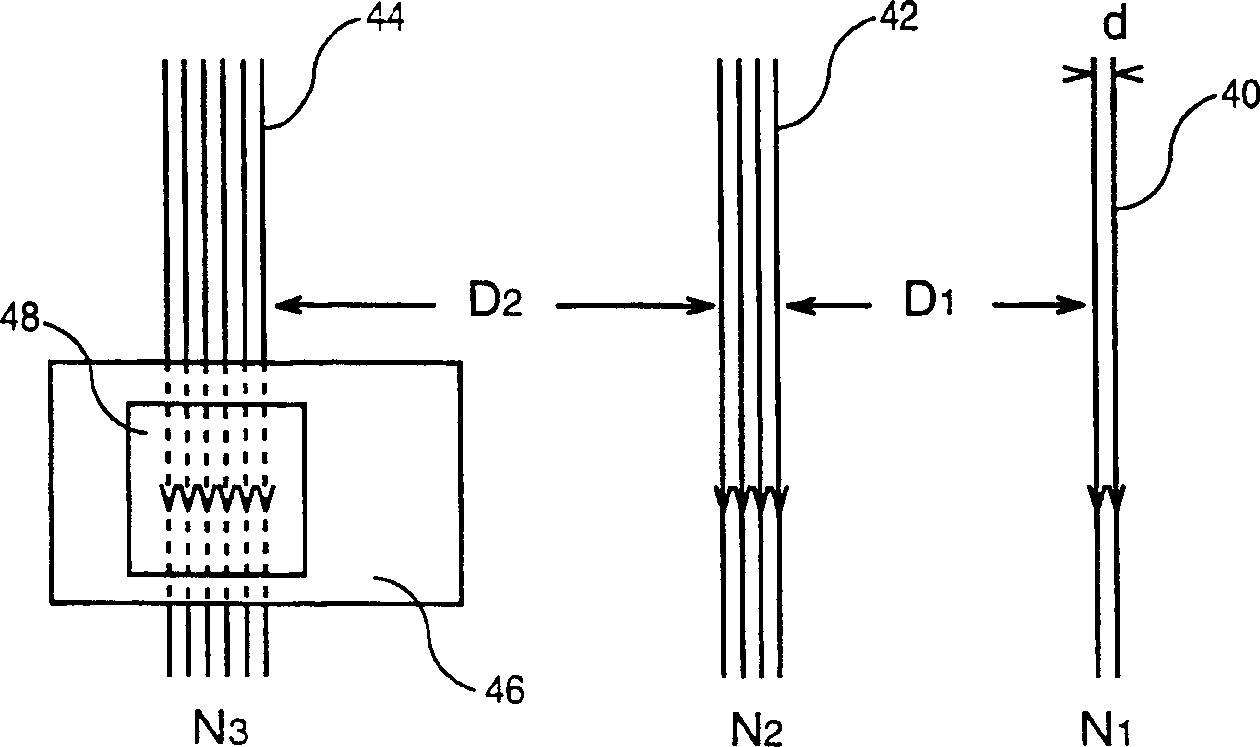Antenna for contact-free transmission/reception reading system
A reader and antenna technology, which is applied to antennas, transmission systems, loop antennas, etc., can solve the problems of chaotic man-machine control of antennas, unprocessed readers, and ineffective operations.
- Summary
- Abstract
- Description
- Claims
- Application Information
AI Technical Summary
Problems solved by technology
Method used
Image
Examples
Embodiment Construction
[0021] Such as figure 1 As shown in , a conventional antenna 10 featuring multiple turns 12, 14, 16 generates a magnetic field that varies with where it is located. In this way, the value is positive in the sections inside the turns, while the field is negative outside the turns. At the midpoint between two turns and if the magnetic field caused by the turns of the other parts is negligible (weak because it decreases inversely with distance), because the positive magnetic field caused by the strands of the turn and the other turn The negative magnetic field with the same absolute value caused by the strands, the combined magnetic field is zero.
[0022] The indeterminate magnetic field is a major problem in generating the electromagnetic signal emitted by the antenna. The surface of the reader in front of which the carrier is displayed is generally square (or rectangular), 15 cm to 20 cm on each side. If the antenna is located too centrally on the surface, there is a sectio...
PUM
 Login to View More
Login to View More Abstract
Description
Claims
Application Information
 Login to View More
Login to View More - R&D
- Intellectual Property
- Life Sciences
- Materials
- Tech Scout
- Unparalleled Data Quality
- Higher Quality Content
- 60% Fewer Hallucinations
Browse by: Latest US Patents, China's latest patents, Technical Efficacy Thesaurus, Application Domain, Technology Topic, Popular Technical Reports.
© 2025 PatSnap. All rights reserved.Legal|Privacy policy|Modern Slavery Act Transparency Statement|Sitemap|About US| Contact US: help@patsnap.com



